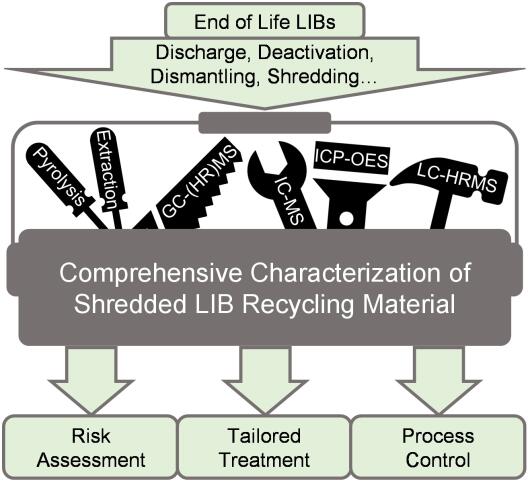MEET Team presents Toolbox for Analysis of End-of-Life-Batteries
Compared to laboratory cells or aged but still intact commercial cells, shredded battery materials represent an even more complex sample. Active materials of both electrodes, inactive materials and electrolyte residues cannot be easily analysed separately. In order to understand in detail which materials were originally used in these samples and how the cells have aged, scientists from MEET Battery Research Center at the University of Münster and the Institute for Mechanical Process Engineering and Processing Technology at the Technische Universität (TU) Bergakademie Freiberg have identified a broad spectrum of methods for analysing shredded lithium-ion battery materials.

Circular Economy of Batteries
“Due to the rapidly growing battery cell production, the return flows of spent lithium-ion batteries will also increase strongly in the near future. To close the circular supply chain of batteries, it is all the more important to comprehensively research the different fields of recycling,” explains MEET scientist Christoph Peschel. “In addition, current recycling materials do not always contain the same battery chemistry. Rather, completely different materials can be embedded, which were used within the last decades.” With the presented methodological toolbox for end-of-life batteries, the various samples can be comprehensively characterised and thus conclusions can be made about the proportions of valuable materials, the electrolyte used and the inactive materials.
The research team identified and quantified not only the active material composition and current collectors, but also organic residues such as binders, electrolyte and additives. Based on this understanding, the scientists can now, for example, assess the hazard potential of the recycled material, tailor the material treatment and specifically control the subsequent recycling process. Dr Sascha Nowak, Head of the Research Division Analytics and Environment at MEET Battery Research Center, says: “With our results, we are encourage the systematic further development of process analytics and quality controls for industrial battery recycling.” This is also important considering the availability of battery raw materials.
Study Embedded in the Competence Cluster for Battery Cell Production
The detailed results of their study have been published by Christoph Peschel, Stefan van Wickeren, Yves Preibisch, Verena Naber, Lars Frankenstein, Dr Fabian Horsthemke und Dr Sascha Nowak, MEET Battery Research Center, Prof. Dr Martin Winter, MEET Battery Research Center and Helmholtz Institute Münster, as well as Prof. Dr Urs Peuker und Denis Werner, Institute of Mechanical Process Engineering and Mineral Processing of TU Bergakademie Freiberg, in the scientific journal “Chemistry - A European Journal”. The research is embedded in the project “Innovative Recycling Processes for New Lithium Cell Generations (InnoRec)” of the Competence Cluster for Battery Cell Production (ProZell).

